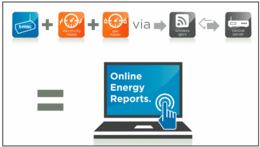Stimulating behavioural change reduces carbon emissions

While people who work in buildings can play a vital role in reducing carbon emissions, they need constantly reminders to keep up their efforts — as Lisa Wilkinson explains.
Behavioural change of employees is a principle that many businesses would not necessarily associate with the energy management of buildings. However, it is an area that business should take seriously and consider to help save energy and money.
More and more businesses are waking up to their green credentials; they know that they need to be greener, and many are now employing energy-management technology within their buildings to help with their energy plight. But, without the buy-in from staff to support energy-reduction technology the benefits of the implementation and the investment made will not reach its optimum.
Installing a culture of green behaviour in the business environment is not only about raising awareness of environmental considerations but also about successful up-take of the change — i.e. people actually putting energy management practices into action.
Getting people to change/alter their behaviour and their attitudes towards energy saving is key.
For instance, most people are aware of the benefits of turning off the lights in the building at the end of the day, but this does not necessarily mean everyone will do it. Without full buy-in and maintained input from users, technology can, in effect, become fruitless.
To be truly effective, behavioural change needs to be for everyone. One person alone can indeed make a small difference, but on a larger scale it is impossible for one person to monitor and control everything at all times. For example, people often forget they have adjusted the heating, so others open windows to cool down. If they were more aware of energy-management systems and adapted their behaviour to take into account the impact of their actions the savings made would be much more substantial.
Modern building-management systems like t-mac go a step further towards independent energy control by not only monitoring energy used by utilities such as lighting and heating and equipment such as air conditioning units and office equipment, but by also having the added function of remote and automatic control.

The control function allows users to pre-set conditions to be appropriate to requirements. For example, users can programme lighting to come on at suitable times to opening hours or even set limits so heating does not exceed a pre-agreed level.
In addition, if heating does exceed pre-set levels, users are alerted to problems via text or e-mail so they can rectify the problem either through GPRS technology online or on-site if convenient — controlling the issue before it escalates in size, time and expense. Alternatively other equipment can be programmed to come into effect to regulate temperature; for example, air conditioning can be programmed to come on when the temperature is too high. In essence the system can implement change of its own accord.
Systems like t-mac provide showcasing opportunities through online software, which can give valuable insights to all users and occupiers of the building’s energy management and reduction activities.
By educating users and occupiers (not just energy managers) how to save energy and use it more effectively, businesses can gain buy-in from stakeholders — enabling them to see and understand the value of the system and also see where they too can help business achieve carbon reduction. This ultimately improves the longevity of energy-improvement strategies within the business, and behavioural change takes place naturally.
Human interaction, viewing energy-saving activities and being educated on opportunities is essential to make these systems work to their full potential. You can set the system once and leave it to work, but it will not make the most of the equipment. Continuous re-evaluation and education on the practices and savings which can be made is the route to well controlled and maintained energy management.
Lisa Wilkinson is director of t-mac Technologies.








